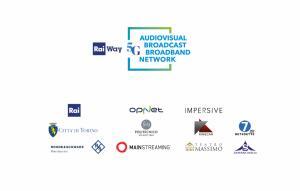Vivivaldy has recently started a partnership with ARTEL to provide its customers precision time synching without the need for any further software layer or any external device to plug inside their hardware. This is possible because ARTEL Switches have a built-in PTPv2 clock oscillator that allows synchronizing precisely packets sent within a network. That means, for instance, that a given audio streaming will always be lip-synched to a correspondent video. This feat, together with Vivivaldy deterministic latency (which allows keeping latency stable and at the lowest possible value), uncompressed high-quality audio transmission capability, and multi-point, multi-casting allowance makes for a truly killer tool when it comes to audio and video productions. We reached Egor Tyagunov, Director of Business Development, EMEA, to ask him some questions about the partnership with Vivivaldy and the present streaming scene. He had been very kind and helpful. Here is what he told us:
If you were to describe ARTEL’s cooperation with Vivivaldy, how would you do it? What made the two companies decide that joining forces was a sound strategy?
Well, basically, I’d say it comes up to two factors: first, we have a PTPv2 clockinside our switches, which allows us to grant precision in streaming protocols, which has become more and more important in lots of applications, nowadays. Secondly, we like to consider ourselves a media company, and that’s the main difference from our competitors. We treat data as media, whereas most of our competitors are IT companies, which use transparent clocking only (when they have such a solution). Our line of dedicated products, instead, lowers latency and takes care of redundancy as well, because, given that any node is in synch with one another, even if the master should go down, each switch is perfectly capable of maintaining coordination until the master clock is finally up again. As for Vivivaldy, we see it as a great occasion to connect different stations and endpoints to our switches. It enables us to consider more complex scenarios and it makes perfect sense to manage projects together.
How do you see the market? Is it growing? Are you optimistic about the future of the industry?
Absolutely. The pandemic changed the world completely, as we all know, but, at least in the case of our industry, not all were for the worst: after quarantine faded out, not everything else faded out as well. Remote broadcasting is still a very hot topic, possibly even more than before. We now see things like virtual crowds in talk shows, that is to say: participants in the show interact from their own homes, instead of being present in the studio. Most of all, though, remote broadcasting is huge because it saves money. You now can fake the studio altogether: you can decide where to produce your content while having contributors operate from anywhere they want or need via multi-casting. It’s really a great opportunity.
What can go wrong, then? Is there still some space for improvement?
Definitely. The problem with sparing money thanks to remote productions is that now people are investing less in the quality of delivery, thus shrinking budgets, which is not a smart move, in my opinion. The main reason for that is that the consumption of content happens mainly via mobile phone and that means that you do not need top-notch quality. When the band you exploit to transmit upon is on average 2 Mbit per second even poor quality will suffice, but that can’t be the be-all-end-all of video or audio production. Luckily, there is still Realtime live media production, which needs high-level quality, but, in general, I would like to see more people fight for quality and reliability because it’s always needed.



